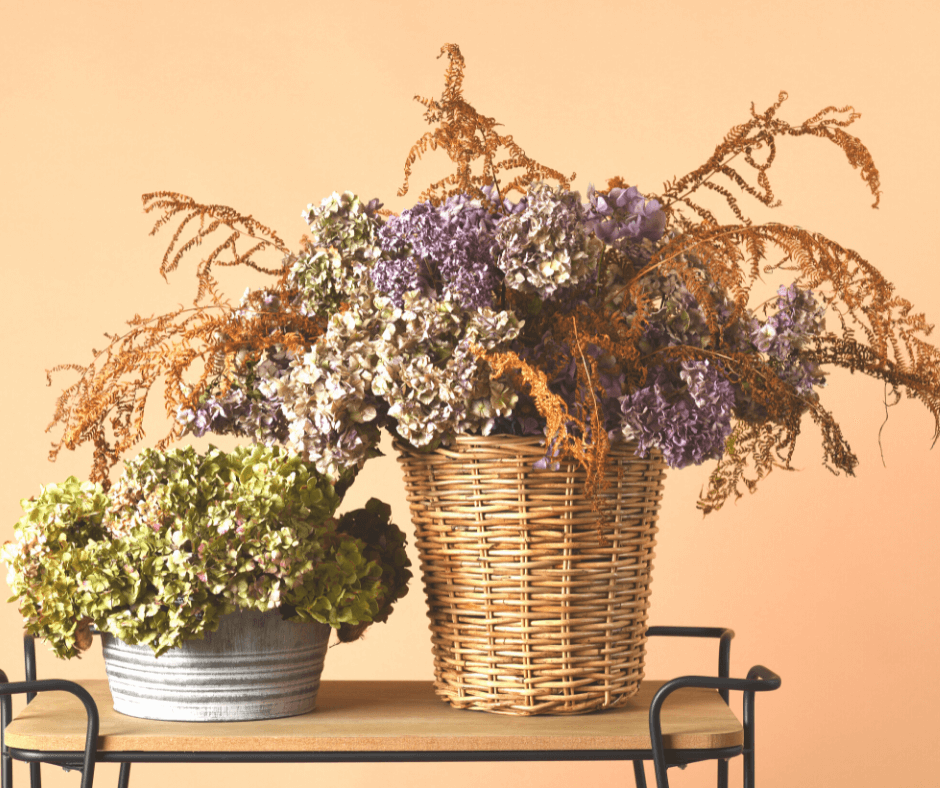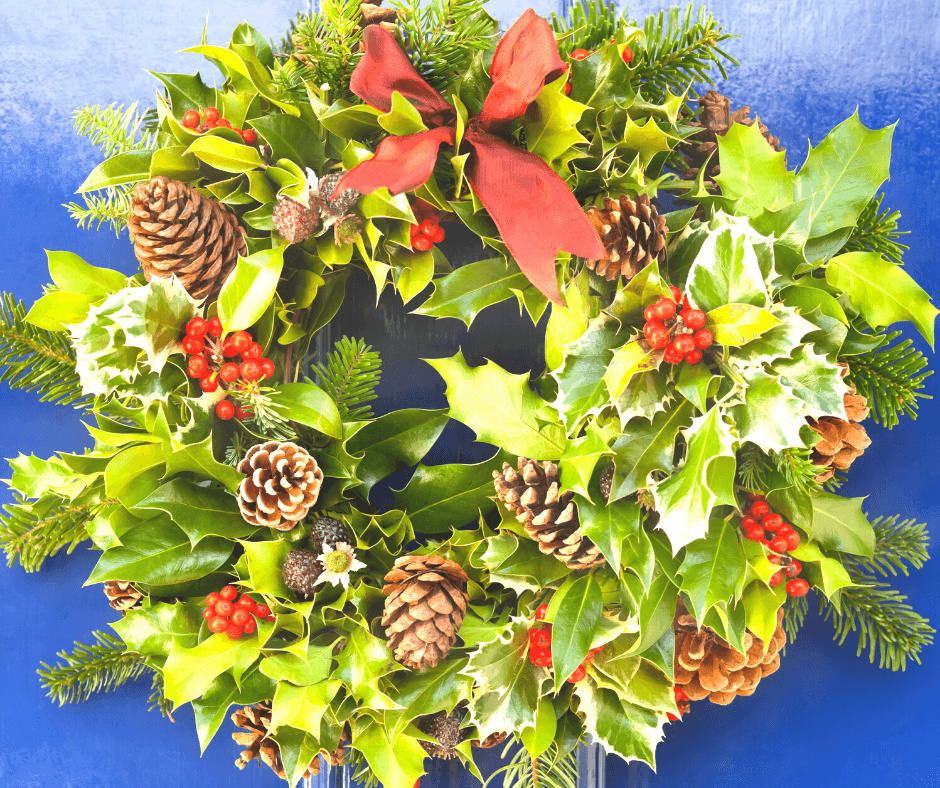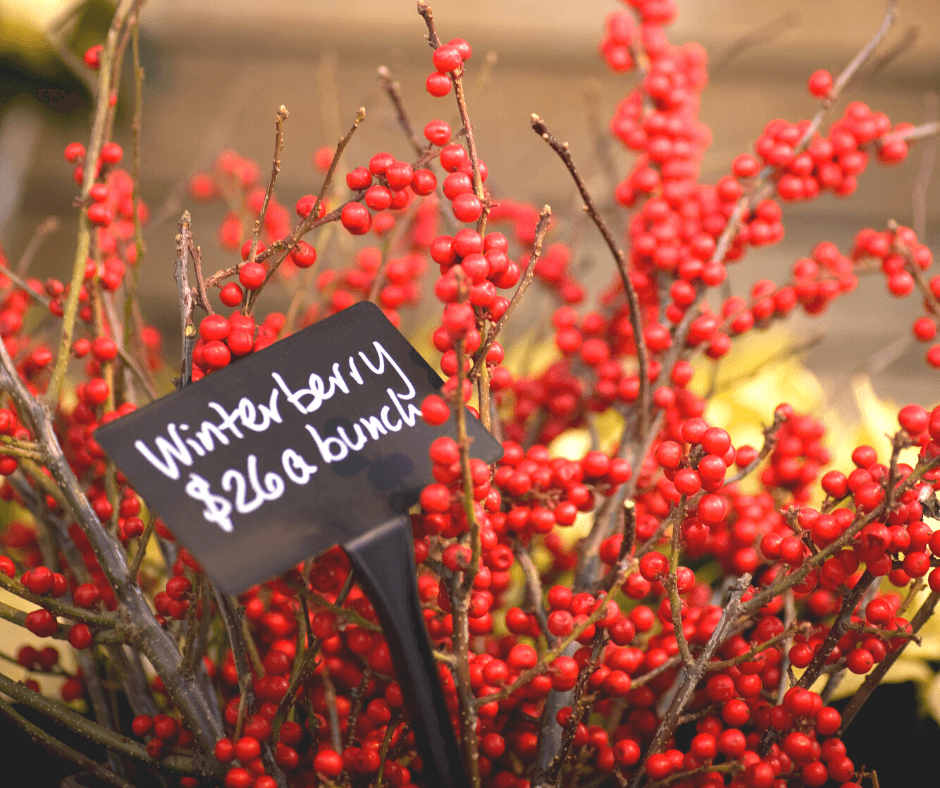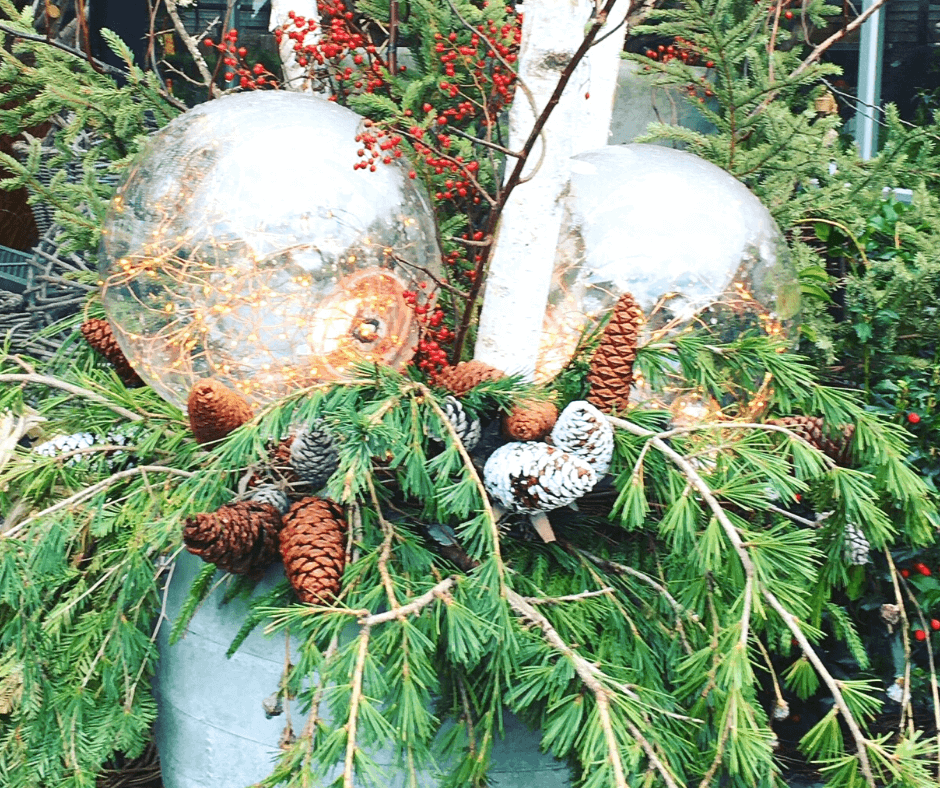
The gardening season is over by November for most in the country. Instead of looking out of my kitchen window and seeing roses, daylilies, and other perennials, I now look upon colorful, textural trees and shrubs with winter interest. Their festive berries, seedheads, and evergreen foliage add needed beauty to the garden in the drab winter months. Even better, their branches can be cut and brought indoors to spruce up decor for the holidays.
My winter-interest plants have been in the ground for some years, so I can now freely harvest branches from them. I recommend every gardener plant a few if they have the space. Not only are they lovely plants, but they are money-saving because fresh holiday branches are expensive when purchased at garden centers and tree yards. Here are a few of my favorites for the winter garden and winter-branch decorating.
Hydrangeas

Hydrangea flowers of all kinds can be easily dried and will stay beautiful for months. My favorites are the panicle hydrangeas (Hydrangea paniculata, Zones 3-8) with their huge, cone-shaped flowers in hues of white, green, and even rose-red. The cultivar Firelight®, from Proven Winners, reaches 6 feet tall and has flowers that start out white, age to bright pink, and finally turn soft red. It is hardy and needs full to partial sunlight and well-drained soil. When dried, the flowers maintain a rosy-tan hue. Bigleaf hydrangeas (Hydrangea macrophylla, Zones 5-9), with their intense blue or pink flowers, can also be dried and saved in the same way.
To dry hydrangea blooms, cut the stems to the length you want when the bracted blossoms begin to feel papery. Strip the leaves off from the stems and then put them in a container with 2 inches of water. Place them away from direct sunlight to help maintain their color. Allow them to dry for one to two weeks. Spraying them with aerosol hair spray at the beginning of the process will give the dry blooms added durability.
Hollies

Of course, one of my favorite classic Christmas plants is evergreen holly. I could not always find holly branches for sale, so years ago I planted two blue hollies (Ilex x meserveae, Zones 5-7) in my backyard. Now I have all I want at Christmastime. In order to get berries, I planted both a male and female plant. Only females produce berries and a male plant is needed to fertilize the lady. The blue holly varieties that I chose were China Girl and China Boy, which have shiny green leaves and the females provide profuse red berries. The shrubs get 6 to 8 feet wide and 8 to 10 feet tall, unless pruned. Planting them close to one another encourages cross-pollination and heavy berry production. Cut branches off as needed for indoor color.
Blue hollies like average, well-drained soil, and full to partial sun. They are also great landscape shrubs because they are deer resistant, and the birds like to eat the berries and make nests in them for protection from predators. If you must prune, the best time is just after flowering because these blue hollies only bloom on second-year wood.
Winterberries

These deciduous hollies lose their leaves in the fall, leaving bare branches packed with berries. There are lots of bushy, colorful winterberries from which to choose. Like other hollies, one male shrub is needed to pollinate the berry-producing females. Proven Winners’ Berry Heavy and Berry Heavy Gold bear copious branches laden with bright red and gold berries. Plant Mr. Poppins® winterberry as the pollenizing male shrub. If you are looking for a shorter, more compact winterberry that bears large, abundant, bright, red berries, you might consider Little Goblin® Red (4 x 4 ft.). Plant at least one Little Goblin® Guy as a pollenizer–one male shrub can supply pollen to up to five females. Winterberries tolerate moist soil and produce the most berries if planted in the full sun, though they can tolerate partial sun. Cut off their festive branches for long-lasting indoor color.
Evergreens

Evergreens from my garden are essential for my Christmas decorations because every year I accent my manger scene on top of my old upright piano with evergreen branches and pine cones. I choose branches from many wonderful conifers in my garden, including Nootka cedar (Chamaecyparis nootkatensis, Zones 3-8, 60-90 ft.), which has soft, evergreen branches, much like arborvitae, prickly silvery-blue spruce (Picea pungens, Zones 2-7, 30-60 ft.) boughs, and the soft branches of white pine (Pinus strobus, Zones 3-8, 50-150 ft.). All of these trees need space and make beautiful specimens if you have a sizable yard. One potential concern with growing blue spruce is the fungal needle disease called Rhizosphaera, which has slowly been killing them off, so disease management may be required (click here to learn more). Another comparable tree with no disease problems is the white fir (Abies concolor, Zones 3-7, 40-70 ft.). I also like white fir because its waxy blue-green needles are not prickly.
When decorating my manger scene with evergreens, I first put down artificial snow blankets, then the manger scene in the middle, a miniature church at one end, and an old piece of driftwood on the other. Evergreen branches and pine cones of all types and sizes are placed behind the whole scene with a chain of tiny rice lights twined through them. Finally, I sprinkle artificial, glittery snow over it all. In addition to greens from my yard, I also like to snip off some of the lower branches from my balsam fir Christmas tree to add fragrance to the display. My manger scene is one of the last things I take down after the holidays.
I also like to add evergreen branches around candles, in holiday flower arrangements, and to decorate outdoor pots (see the video above). Another perfect use is to make your own wreaths from them. Metal wreath forms are available to buy and make DIY wreath making a snap. I also recommend sticking in a few winterberries or holly branches for color (see the video below).
Consider spending some time this season making your own decorations and displays from the garden. Or, you can plan to plant your garden up with hollies and evergreens next year if it lacks them. Happy holidays!

